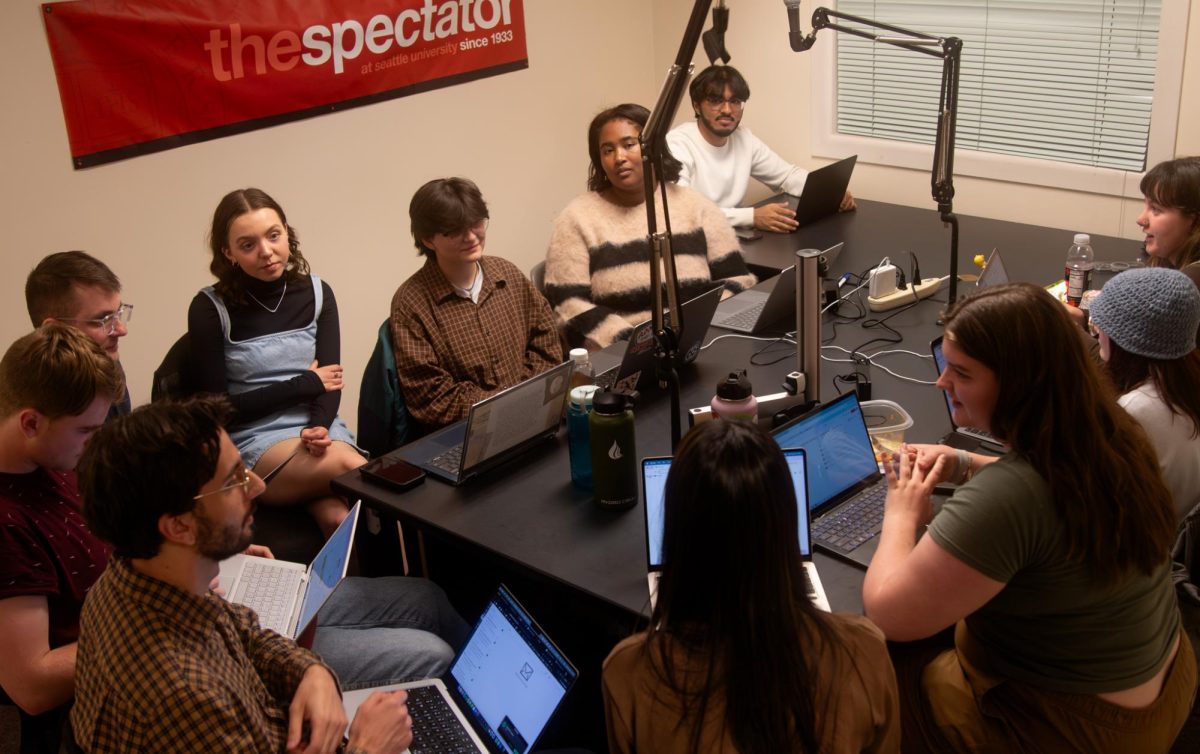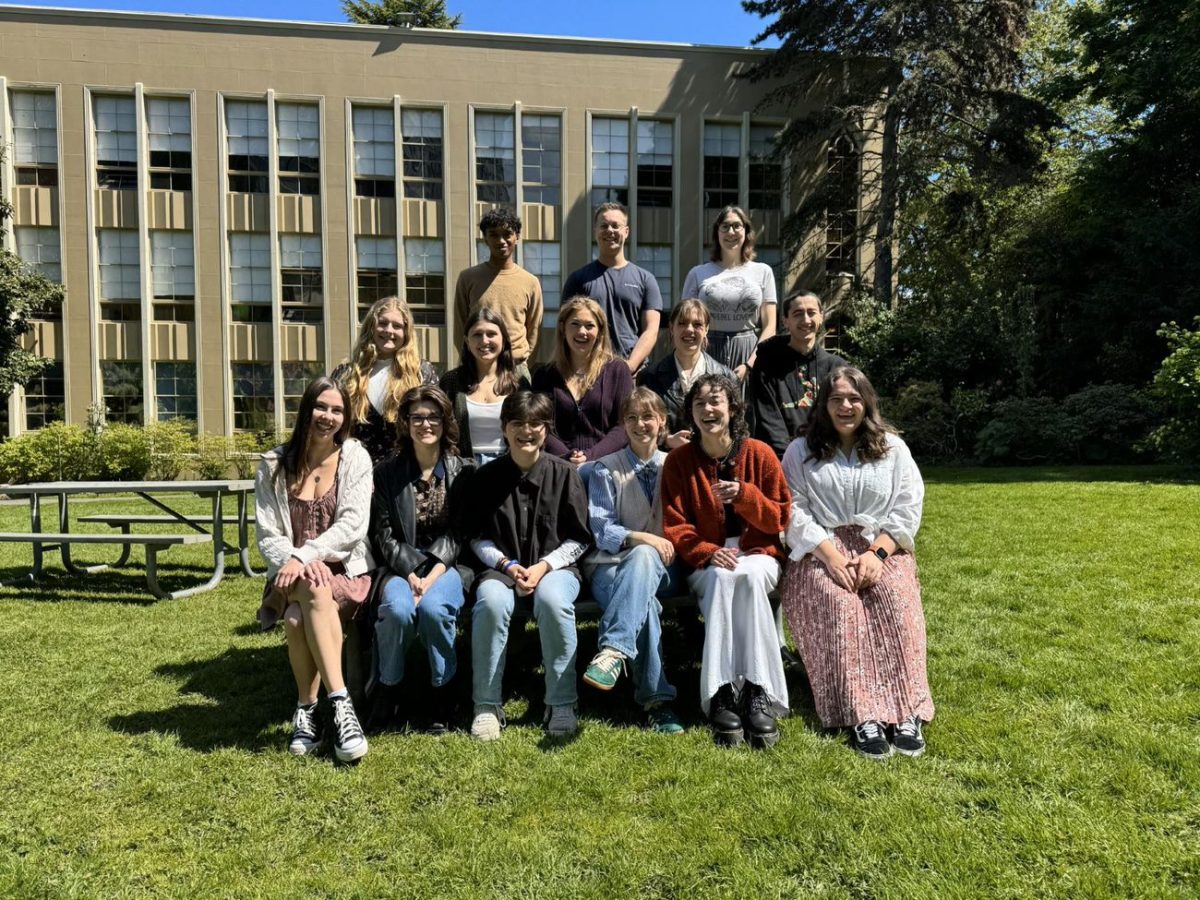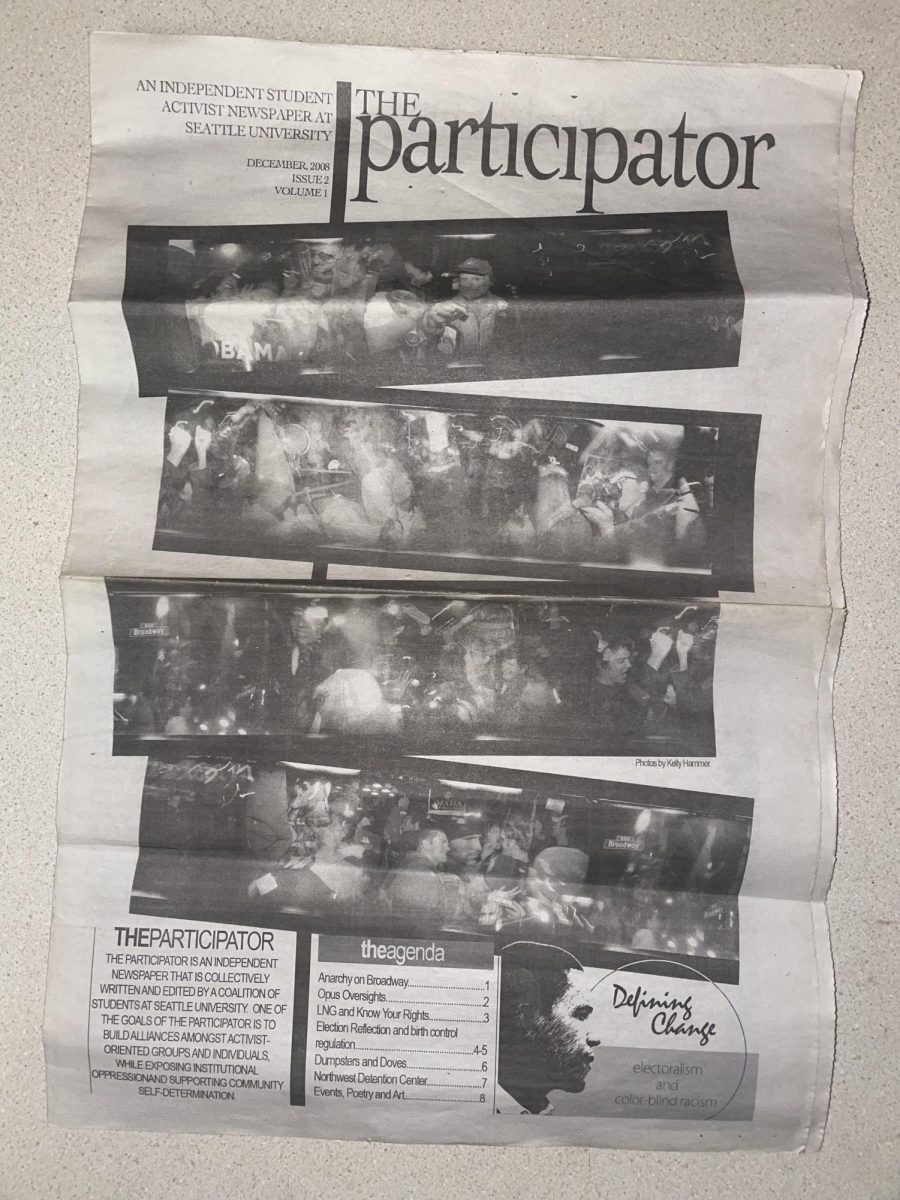With the arrival of the springtime sunshine, hammocks start popping up in the quad and students flock to the library steps to enjoy the beautiful weather. However, those aren’t the only changes students can see on the Seattle University campus, or better yet, the changes they can hear.
Seattle U is home to a diverse community of birds, and not only do they add the perfect background music when walking through the gardens to feel like a Disney princess, but their songs and behaviors are monitored by faculty and students.
“I just really like how much diversity you can find in the city. Like, people think cities are really boring and drab, and there’s not as much biodiversity as in a forest, but there are a lot of species that have their own unique thing going on in the cities,” Biology major Celeste Dylla said.
Dylla has been researching the Bushtit, a small, native gray bird on campus, under biology professor Rebecca Hartley since the start of spring quarter. She joins other biology students in nest observations weekly to see what the bird is doing.
“[The Bushtit] haven’t been studied very much. They also don’t have very elaborate vocalizations, and that’s maybe why, because it’s more fun to study a song sparrow that has a lot of beautiful songs,” Hartley said.
Hartley started recording birds about two years ago, and those on-campus observations have grown into a research opportunity for students. The bird noises are recorded with special microphones and headphones that reduce noise. With the city traffic, airplanes and fountains, it can be hard to hear the birds. Going out in the mornings, when the weather is nice, is peak beak time to hear them.
For the first time, Hartley is teaching a UCOR 1800 course this spring quarter all about birds, a course she got approved last year and has been working on since.
“We have invested in some good binoculars, so the students can get a good view of birds on campus,” Hartley said. “We just walk around campus, we don’t go super far or super fast. Everybody is looking and if someone sees a bird we all stop and we look and we see if we can identify it.”
Usually, only a handful of birds are spotted, but for those beautiful sunny days, the students were able to spot about 10 different birds.
“We have a lot of robins on campus, and they feed out in the open on the grass, so they’re a good bird to get out and observe,” Hartley said. “They also have a really pretty song, it is sort of melodious and chirpy. They have certain calling notes that I will hear around campus.”
Other native birds have been spotted throughout the years on our campus. Starlings ambitiously set up a nest in the chapel bell tower one spring, and the reflecting pool has been home to a family of mallard ducks. There’s also a cute little hummingbird that likes to hang out around the Lemieux library, and has been rumoured to have a nest nearby.
Just like the students, some birds move in and integrate themselves into campus life, and others commute. Ravens fly into campus in the morning, and starlings are usually nesting off-campus.
“We’ve seen birds on campus foraging, and then flying off into the neighborhoods where they are nesting,” Hartley said.
Seattle U Grounds has ensured that our campus is pesticide and insecticide free since 2006, and Integrated Pest Management Coordinator Janice M. Murphy helps the habitats thrive naturally.
“It is not just eliminating the use of [pesticides], but it is providing these areas that are beneficial for birds and insects to take up that job,” Murphy said. “To have healthy plants you need healthy soil, so mulch and leaves left in the beds, and twigs, are all breaking down and are an in-place compost system to help build up the ecosystems.”
In the gardens around campus, nesting boxes are hidden among the trees, ideal for roosting (a warm and dry place for birds in the winter) and raising young in the spring.
“A big piece of my work is enhancing the habitat to benefit birds and insects. Wherever we can we try to leave the seed heads of flowers, or plants with small fruits, so the birds can be fed,” Murphy said.
Though last week was Seattle Bird Week, Grounds puts on the International Backyard Bird Count to study and observe birds for education and awareness every February.
“All those leaves that fall down..that’s food for birds. It’s really good that [Grounds] doesn’t pick it up and leave the gardens a bit messy,” Hartley said.
For a campus of strong student voices, Seattle U is also a home to the chirps and calls of our feathered neighbors. So post-up in the gardens, soak up the sun, take out an earbud or two and get to know the birds that call Seattle home.
Jacqueline may be reached at
[email protected]











